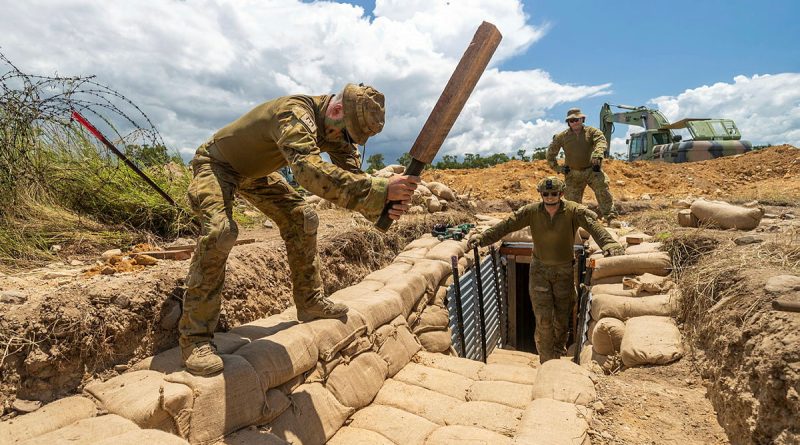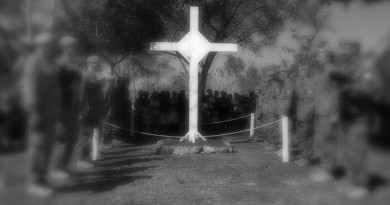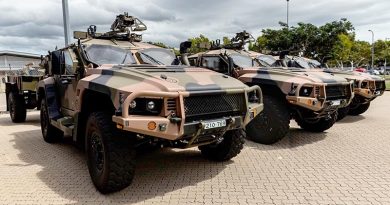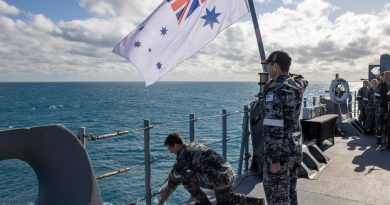Aussie and PNG engineers dig in for trench building
Share the post "Aussie and PNG engineers dig in for trench building"

Sappers from 3 Combat Engineer Regiment (3CER) and Papua New Guinea Defence Force (PNGDF) have been working together to do what diggers do best – dig.
CAPTION: Sapper Dean Ridgeway tamps sandbags during a trench construction activity in Townsville. Story by Major Taylor Lynch. All photos by Sergeant Brodie Cross.
Deploying to Townsville Field Training Area, the combined engineer troop constructed a trench system designed to protect soldiers from a notional enemy’s artillery and other attacks.
The trench system was more complex than simply digging a deep line into the sand; it featured a roof, two fighting positions, a sleeping area and a raised sump in certain areas to avoid excess rainwater, making it more liveable for extended operations.
Corporal Anthony Adams said the joint venture allowed plant equipment operators and vertical construction tradesmen to work together with the PNGDF.
“First we conduct reconnaissance of the location, then we fill into the forward operating base. We mark, measure and start digging the trenches,” Corporal Adams said.
“Then we complete the ‘dog legs’ where angles change, and finally get the beams and roofing established.”
Corporal Adams said a deep, properly constructed trench system provided benefits for soldiers fighting on a conventional battlefield.
“With the ‘enemy’ we’re fighting against in the training scenario, the 500mm overhead protection we’ve provided will protect soldiers inside from high-calibre artillery rounds,” he said.
“In an operational environment the trench system typically takes about three days to establish, and there have been a lot of learning curves in getting this one completed.”

CAPTION: Papua New Guinea Defence Force Sergeant Andrew Foieke works with Australian Army soldiers during a trench construction activity in Townsville Field Training Area, Queensland.
PNGDF Sergeant Andrew Foieke said the contingent enjoyed training with their 3CER colleagues.
“We all come from a similar background in the engineer corps, and 3CER is the sister unit to our PNGDF Engineer Battalion back home, so we have a connection,” Sergeant Foieke said.
“When we come over to work with our colleagues in 3CER, it’s a boost in our morale.
“Most of these tasks are not new to us; we do them at home using different equipment and technology.
“In Australia we experience different capabilities than we have back home, so we acquire the knowledge and adjust ourselves when we return.”
Sergeantt Foieke said that, in return, the PNGDF engineers imparted the improvisation and skills handed down from their forefathers to their 3CER comrades.
“We bring a lot of old-school skills developed in World War 2 and the Vietnam War that we’ve enjoyed showing 3CER, such as the aerial ropeway we use to ferry personnel and equipment across rivers,” he said.
“We’ve used these skills since our grandfathers were in the Army. We can build rafts from logs or jerry cans.
“We pride ourselves on the ability to improvise and build something from nothing.”
Corporal Adams appreciated the PNGDF engineers’ capacity for hard work in challenging circumstances.
“The PNGDF are trade-qualified and have been assisting our tradesmen with construction, and we’ve learned each other’s equipment to work together seamlessly,” he said.
“Their ability to work in conditions that we’re not necessarily used to, like in the extreme heat, is absolutely amazing.
“They’re great guys with a solid work ethic. When it’s needed, they can really hook in and work to get the job done.”

CAPTION: Australian Army soldiers from the 3rd Combat Engineer Regiment and engineers from the Papua New Guinea Defence Force during a trench construction activity.
.
.

.
.
Share the post "Aussie and PNG engineers dig in for trench building"





